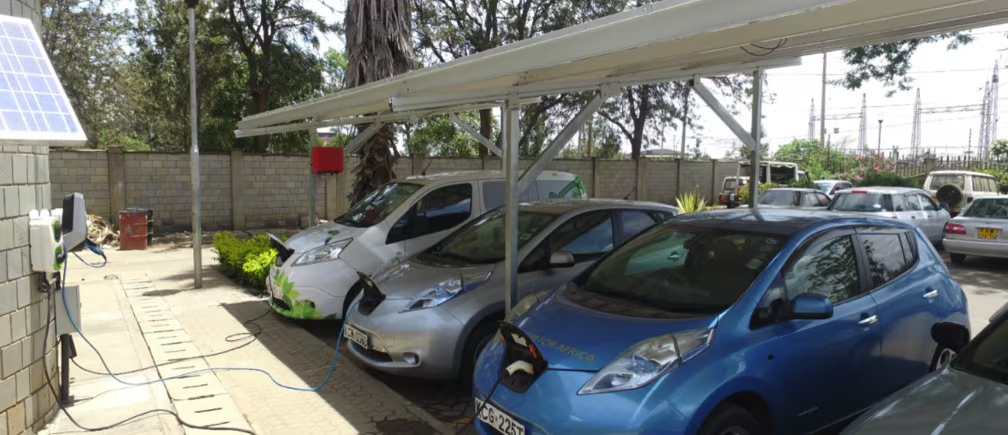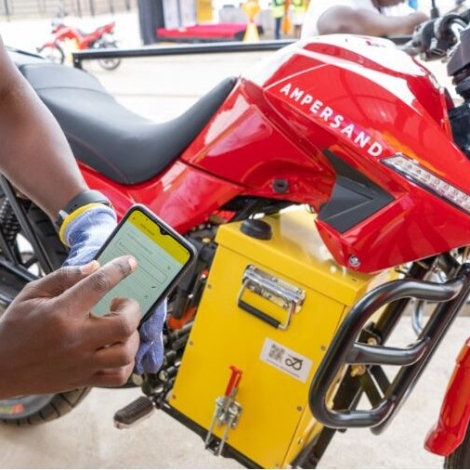On a typical day along the Nairobi-Nakuru highway, the majority of cars, motorcycles and matatu minibuses burn fossil fuels. There are a few electric motorcycles, tuk-tuks and buses, they electric vehicles (EVs) still represent less than 1 percent of the nation’s fleet. Registrations of EVs in Kenya are surging, however.
Kenya has been ranked 7th among the top 10 African countries adopting EVs, according to data from the International Energy Agency, as reported by Business Insider Africa.
Rising urban populations and fuel prices are pushing many African nations to invest in EVs as a cleaner, cost-effective alternative to fossil fuel transport. National policies—expected in over a dozen countries by 2025—are accelerating this shift through tax incentives, public transport pilots, and local manufacturing support.
According to the International Energy Agency, the top five countries leading EV adoption on the continent are Ghana, Morocco, South Africa, Tanzania, and Ethiopia. Ghana tops the list with an estimated 17,000 EVs, driven largely by duty waivers and widespread use of electric two- and three-wheelers. Morocco follows with 10,000 EVs and over 400 charging stations, bolstered by a growing export market. South Africa has around 6,000 EVs and has eliminated import duties, while Tanzania and Ethiopia each count between 5,000 to 7,000 vehicles, driven by electric bikes and tuk-tuks and hydropower-backed incentives, respectively.
Kenya earned its placement in the top 10 thanks to programs such as the launch of an electric bus pilot in Nairobi, and the country is one of several in Africa positioning themselves to become EV assembly hubs.

Electric cars charging from solar photovoltaic panels in Nairobi, Kenya. Photo: World Economic Forum (CC BY-NC-ND 4.0)
In March 2024, Kenya launched the National E-Mobility Policy meant to create an enabling environment for the growth and adoption of EVs across the country. The policy provides a framework for the transition from conventional internal combustion engine vehicles. The country went ahead and introduced several tax incentives including a reduction in the excise duty on electric vehicles from 20 percent to 10 percent and the exemption of fully electric cars from value-added tax. By lowering the tax burden, the government wanted to ensure that EVs are more competitive than their petrol and diesel counterparts.
“Electric vehicles represent a high-tech industry with strong value potential—owners of EVs or e-motorbikes can earn profit margins of up to $700,” noted Mr. Latiff Cherono, Chief Operations Officer, Gearbox Europlacer. “Kenya can enhance its role in the EV space by increasing investment in research and development, rather than relying solely on imported knockdown kits for assembly.”
He added that the country should focus on developing its intellectual property, enhancing features such as payment systems and battery charging stations, and building local technical capacity. “To fully benefit, Africa must prioritize innovation to avoid dependency on foreign IP.”
The National Energy Efficiency and Conservation Strategy set an ambitious target that by 2025, all the newly registered vehicles in Kenya should be EVs. But this has not been the case, as the adoption of electric vehicles in Kenya has been slow.
A slow pace has characterized the EV transition throughout the continent, and one of the roadblocks has been the technology, rather than the policy.
“Our results show that fleets will have to contain a mix of electric and combustion-based engines if countries want to continue to transport the same amount of goods and people they are currently transporting. This is because electric vehicles charge slowly,” MJ Booysen and Joubert Van Eeden at Stellenbosch University in South Africa write. “While a diesel minibus taxi takes only one minute to fill up with enough diesel to travel 750 kilometres, the fastest currently available electric minibus recharges at a mere 2km per minute with DC and 0.3km per minute with AC. The electric taxi’s range is also only 21 percent of the diesel equivalent.”
Read More: Electric Vehicles in Africa; What’s Needed to Grow the Sector
More charging stations can help and more are on the way. Kenya Power announced a plan to install 45 EV chargers in six counties in the next year. During the opening of the 3rd Annual E‑mobility Conference in Nairobi last month, Kenya Power Managing Director & CEO, Dr . Joseph Siror stated: “Part of our plan is to create an enabling environment for players within the e‑mobility ecosystem through the provision of adequate power supply and the requisite infrastructure, such as charging stations, that will enable motorists to travel with ease.”
It is clear that African Countries are gearing up for EV adoption. What is required is adequate infrastructure, an enabling policy environment and capacity building, technology transfer, and investment mobilization to achieve the goal.
About the Author
Mercy C. Wanjiku Nduati is the Engineering for Change Editorial Fellow for 2025. She also works on the editorial staff of the Vennomax Media Network that publishes the Industrial Journal magazine. And she has written for the magazine Kenya Engineer, published by the Institution of Engineers in Kenya. She holds a bachelor’s degree in communication and media from Egerton University.


It’s great to see African countries taking meaningful steps toward electric mobility. The shift to EVs is not just about cutting emissions—it’s also about innovation, job creation, and building a cleaner future. I’m hopeful that with the right support and infrastructure, this transition will bring long-term benefits to both people and the planet.